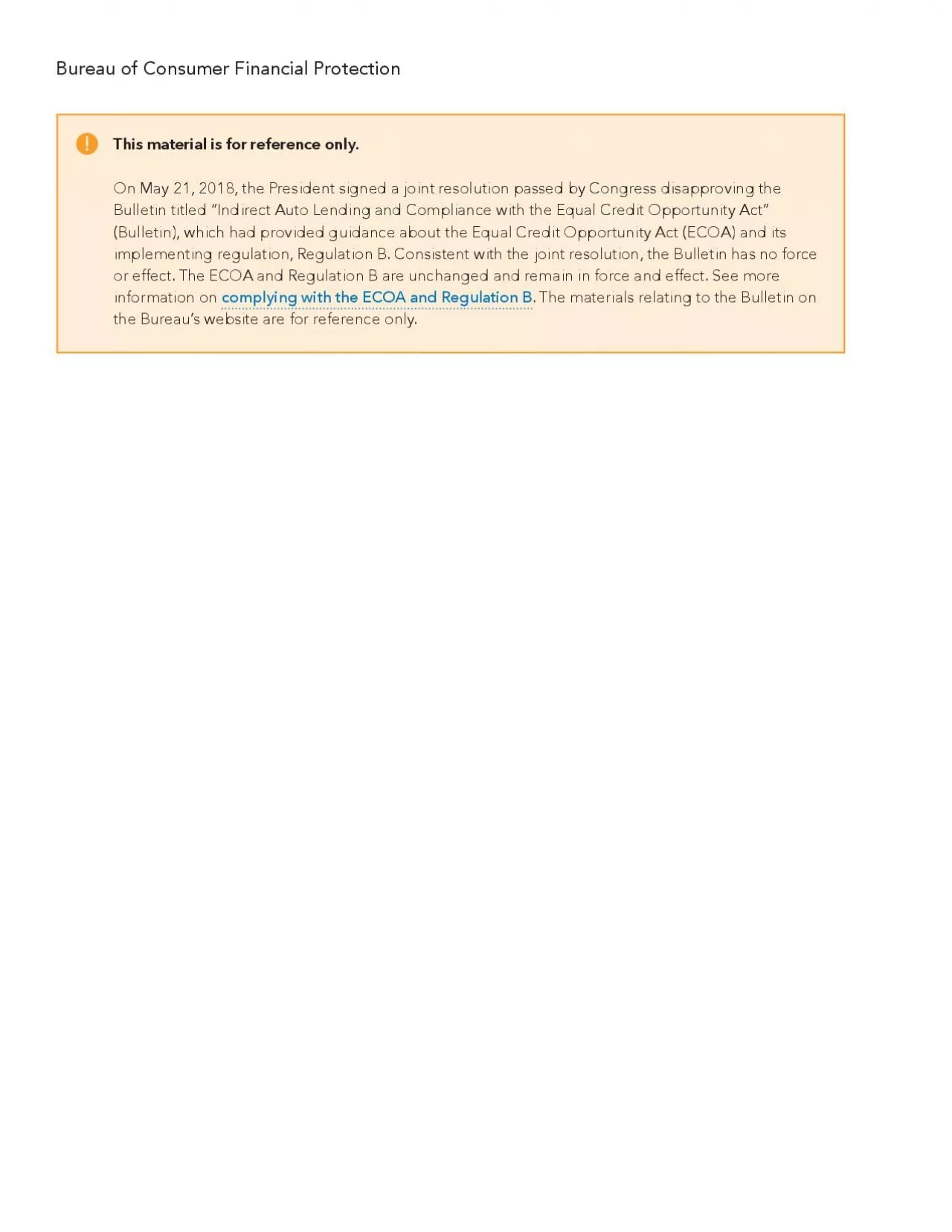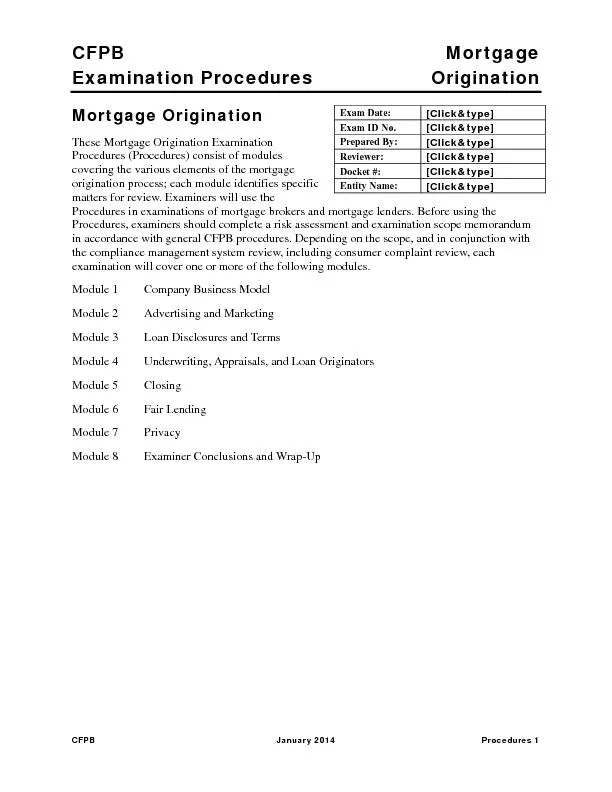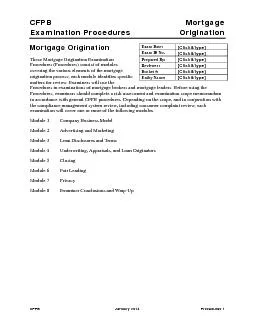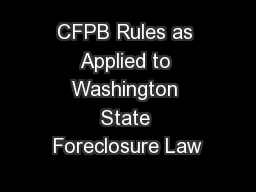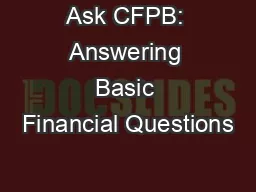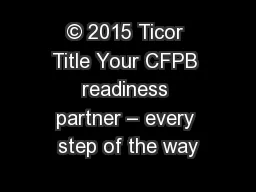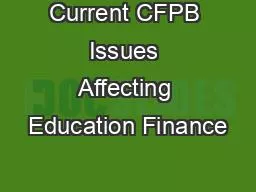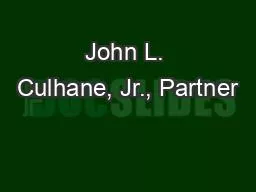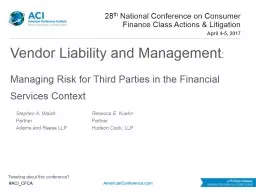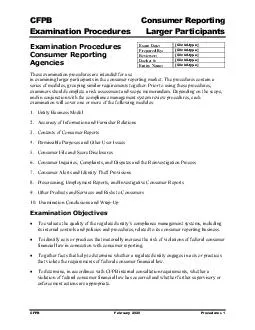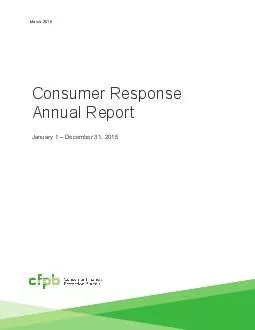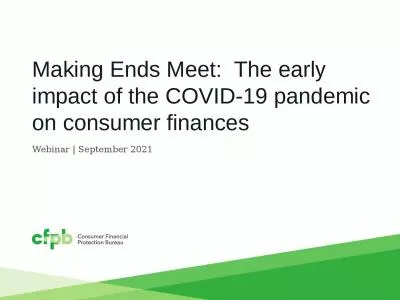PDF-CFPB Consumer Lawsand RegulationsECOA
Author : ximena | Published Date : 2021-09-29
CFPBOctober 2015ECOA For fair lending scoping and examination procedures the CFPB is temporarily adopting the FFIEC Interagency Fair Lending Examination Procedures
Presentation Embed Code
Download Presentation
Download Presentation The PPT/PDF document "CFPB Consumer Lawsand RegulationsECOA" is the property of its rightful owner. Permission is granted to download and print the materials on this website for personal, non-commercial use only, and to display it on your personal computer provided you do not modify the materials and that you retain all copyright notices contained in the materials. By downloading content from our website, you accept the terms of this agreement.
CFPB Consumer Lawsand RegulationsECOA: Transcript
Download Rules Of Document
"CFPB Consumer Lawsand RegulationsECOA"The content belongs to its owner. You may download and print it for personal use, without modification, and keep all copyright notices. By downloading, you agree to these terms.
Related Documents

